You're strolling through the lively streets of your city, camera slung over your shoulder, eyes peeled for that slice-of-life moment that screams to be captured. That is the heartbeat of street photography. It's not just about snapping pictures; it's about snagging a piece of the human experience—raw, unscripted, and utterly real.
Think of street photography as your backstage pass to the grand show of everyday life. It lets you freeze the spontaneous, the serendipitous, and those oh-so-human moments that tend to slip through the cracks of our busy lives.
Now, what makes this art form so darn special? It's simple: street photography tells the story of us. The shared glances, the laughter bubbling up on a corner, the weary commuter lost in thought—all these fragments weave together the rich tapestry of human life in the urban sprawl.
And this guide? It's your roadmap to diving deep into the world of street photography. We'll talk about its roots, why it matters, and how you can get in on this storytelling adventure.
So, let's lace up our walking shoes, sling that camera, and hit the streets. The world's out there, waiting to be seen through your lens, one candid shot at a time.
What Is Street Photography?
What Makes Street Photography Unique?
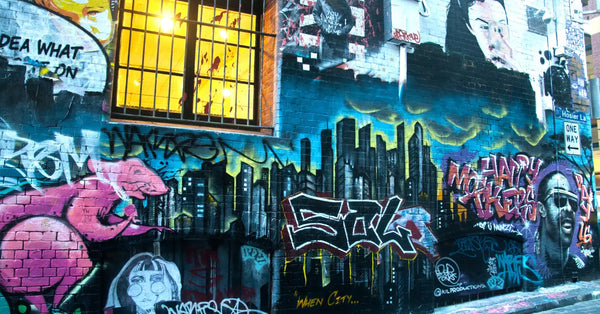
Think of street photography as the wild child of the photography family. It's all about rolling with the punches, finding those hidden gems in the everyday hustle and bustle. No fancy studios or staged shots here; just you, your camera, and the wide, wild world as your playground.
It’s like being a visual ninja, sneaking snapshots of life in its most unguarded moments.
Imagine you’re capturing the laughter of friends sharing a private joke on a crowded street, or the solitary figure of someone lost in thought. These aren’t just photos; they’re real stories unfolding in real-time, each click of the shutter preserving a slice of life that’s raw, untouched, and authentic.
Street photography is about embracing the chaos, the unexpected beauty, and sometimes the awkwardness of daily life. It shows us society in its rawest form - the good, the bad, and everything in between, all through the lens of your camera.
It's not just about taking pictures; it's about telling stories, about capturing those fleeting moments that define the human experience.
The History Of Street Photography

Street photography isn't just a modern-day fascination; it's got a history that goes way back to the 1800s. Picture this: cameras finally became something you could carry around without needing a horse and cart.
That's when adventurous souls started taking their gear to the streets, capturing life as it happened. Think of them as the OG Instagram influencers, but with way more skill and none of the filters.
Enter the legends: Henri Cartier-Bresson, Robert Doisneau, and Vivian Maier. These folks didn't just take photos; they captured moments that told stories all by themselves. Cartier-Bresson was all about the 'decisive moment'—that split second where everything in the universe aligns perfectly in your viewfinder.
Doisneau had a knack for seeing the poetry in everyday Parisian life, turning ordinary moments into extraordinary snapshots.
And Vivian Maier? She was the mysterious nanny who took over 150,000 photographs, documenting the streets of Chicago and New York, most of which weren't even discovered until after she passed away.
What they all had in common was this magic touch for catching life on the fly, telling a whole story in just one frame. They showed us that street photography isn't just about taking pictures; it's about searching for and finding those tiny, fleeting moments that make you stop, look, and think.
Gearing Up for the Streets
Best Lens for Street Photography
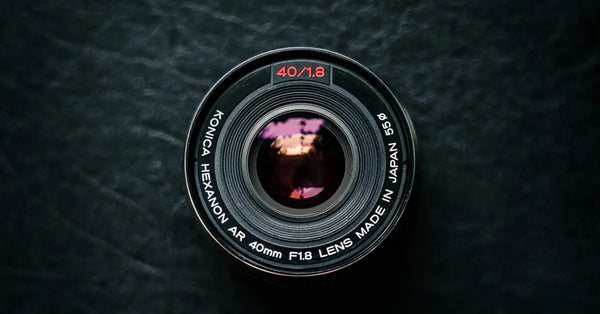
Picking the perfect lens is super important in street photography, kinda like choosing the right shoes for a marathon. You want something that feels just right. Now, why do a lot of street photographers swear by the 35mm or 50mm lenses?
It’s because they kinda see the world like we do, with a natural, straight-up perspective that doesn't distort reality.
These lenses don’t make things look too far away or super close, keeping everything real and relatable, just like our own eyesight.
Plus, they're super lightweight and easy to carry around all day. No one wants to lug around a heavy lens while chasing those perfect, candid moments on the streets. And let's talk about being sneaky – in a good way, of course. These lenses are perfect for snapping quick shots without making a scene.
You can capture life as it happens, without anyone even noticing you’re there. It’s like being a photography ninja, blending into your surroundings to catch those unguarded, precious moments that make street photography so darn cool.
Sigma and Tamron Lens Recommendations:
- For Sigma lovers: Check out the Sigma 35mm F1.4 DG HSM Art. This lens is a gem for street photographers. It’s sharp, fast, and delivers stunning image quality. Its wide aperture of f/1.4 allows you to play with depth of field and is a lifesaver in lower light conditions. It’s like having night vision goggles in dimly lit alleys or during those late-night urban adventures.
- Tamron aficionados, rejoice: The Tamron SP 35mm f/1.4 Di USD is where it’s at. This lens is a powerhouse, offering exceptional sharpness, beautiful bokeh, and an autofocus system that’s both quick and quiet—perfect for capturing those spontaneous street scenes without missing a beat. It’s like having a stealth mode activated while you’re on the hunt for that perfect shot.
Both of these lenses are solid choices for anyone looking to look into the world of street photography. They combine the ideal focal length for a natural perspective with the technical prowess to handle just about any scene you stumble upon. So, whether you're a Sigma fan or a Tamron enthusiast, you've got options that will not only meet but exceed your street-snapping needs.
Top Cameras for Street Photography
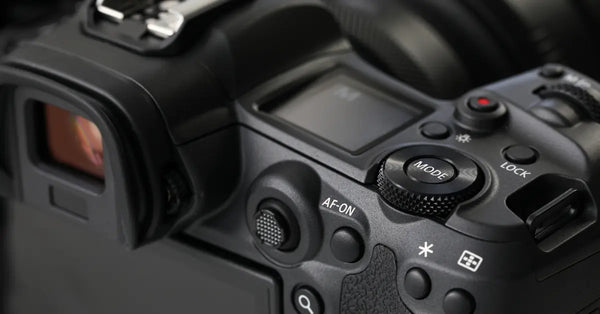
Let's get real about the best camera for nailing those killer street shots—it's whatever camera you've got on you. Seriously, the most epic moments won't wait for you to lug around a giant DSLR. But hey, if we're talking ideals, there are a couple of things that really matter: size, how quick it can snap a pic, and whether it takes crisp, clear photos.
A lot of street photography pros lean towards mirrorless cameras or those sleek, high-end compact cameras. Why? They're like the ninjas of the camera world. Small and unassuming, they let you blend into the background and capture life without screaming, "Hey, I'm taking pictures!"
Plus, they pack a punch in the quality department and won't slow you down, making it a breeze to catch those fleeting, candid moments that street photography is all about.
In the end, it's all about having a camera that feels like an extension of your eye. Something that's ready at a moment's notice, doesn't weigh you down, and delivers stunning images that make people feel something. Whether that's a fancy mirrorless camera, a compact powerhouse, or the smartphone in your pocket, the best camera is the one that's with you, ready to capture the world as you see it.
Here are some Fujifilm camera recommendations:
- Fujifilm X-T30 II: The X-T30 II is a fantastic little powerhouse, perfect for street photographers who value both form and function. It's lightweight and compact, which means you can carry it all day without feeling weighed down. But don't let its size fool you; this camera packs a serious punch with its 26.1MP X-Trans CMOS 4 sensor and X-Processor 4. This combo delivers stunning image quality and fast autofocus, ensuring you never miss a beat. Its intuitive design and easy-to-navigate controls make it a breeze to use, letting you focus on capturing the moment rather than fiddling with settings.
- Fujifilm X100V: The X100V is a cult favorite among street photographers for good reasons. Its fixed 23mm f/2 lens (equivalent to 35mm in full-frame terms) is perfect for street photography, offering a field of view that's not too wide, not too tight, just right for capturing life as it happens. The lens is sharp, fast, and performs exceptionally well in various lighting conditions, making it versatile for day-to-night shooting. The X100V's classic design is not just about looks; it offers stealth and discretion, allowing you to blend into your surroundings and capture candid moments without drawing attention. Its improved sensor and autofocus system from previous models mean you get quicker, more reliable performance in a package that feels like it was made for the streets.
- Fujifilm X-T5: The X-T5, the newest addition to the lineup, builds on the strengths of its predecessors, offering even more power and flexibility for street photography. It boasts a new 40.2MP X-Trans CMOS 5 HR sensor, providing incredible detail and dynamic range, ensuring your street scenes are captured with clarity and depth. The X-T5 maintains the series' signature compactness and lightweight design, making it an ideal companion for long days of exploration. Its weather-resistant build means you won't have to worry about a bit of rain or dust, allowing you to shoot in a variety of conditions. With its improved autofocus system and image stabilization, the X-T5 ensures that you're equipped to capture every spontaneous moment with ease and confidence.
Each of these Fujifilm cameras brings something unique to the table, but they all share a few critical traits that make them outstanding choices for street photography: compactness, speed, image quality, and a certain inconspicuous charm.
Whether you prefer the all-rounder capabilities of the X-T30 II, the classic street photographer's choice of the X100V, or the advanced features of the X-T5, Fujifilm has you covered. Their user-friendly interfaces and stellar image quality make them not just tools, but partners in your creative journey through the streets.
Styles and Approaches
The Candid Heartbeat
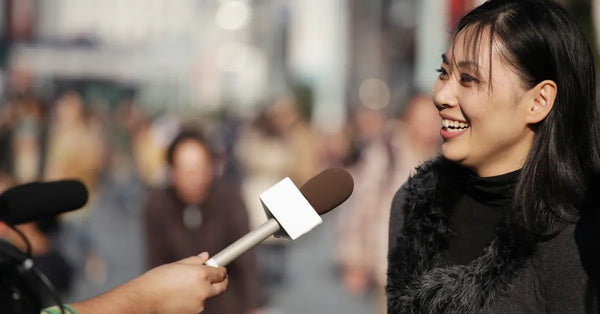
The real magic of street photography? It's all about those candid moments. You know, the kind that happens naturally, no poses, no planning. Just pure, unfiltered slices of life as they happen. Picture this: two strangers sharing a look that says everything without a single word, or someone lost in thought, their reflection caught in a puddle or a shop window.
These are the moments that really grab you, that show you the raw beauty and truth hiding in the everyday hustle and bustle. It's like each shot tells its own little story, a glimpse into a world full of emotion and connection that you might've missed if you blinked.
That's the power of street photography – it's not just about taking pictures; it's about capturing the essence of being human, the shared experiences that tie us all together, one candid snapshot at a time.
The Art of Observation
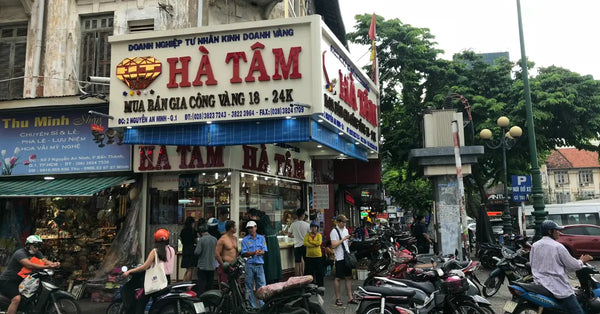
Street photography isn't just about snapping pictures left and right; it's way more about being a bit of a nosy neighbor, in the best way possible. Imagine yourself as a detective, but instead of solving crimes, you're on the lookout for those little slices of life that most people just stroll past without a second glance.
It's about having those hawk eyes for the quirky, the heartwarming, and even the mundane moments that, when captured through your lens, turn into something extraordinary.
This game of observation is really what separates the great street photographers from the ones just taking random shots. It's not just about having a fancy camera or knowing all the technical stuff (though, sure, that helps).
It's about spotting the story in a crowd, the lone smile in a sea of indifferent faces, or that splash of color against a drab background. It's these moments, filled with patterns, emotions, and untold stories, that make street photography such an adventure.
So, in a nutshell, being successful in street photography is less about the gear and more about your ability to see the world differently. It's about capturing life as it happens, not just as it appears. It's about being curious, always on your toes, and ready to capture those fleeting moments that tell a story worth a thousand words.
It's pretty cool when you think about it, turning everyday life into art just by paying a little more attention.
Types of Street Photography
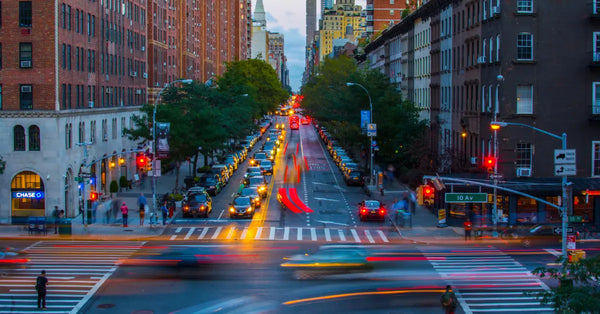
Looking into the world of street photography is like flipping through a live, unedited album of the world in motion. It's where the pulsating vibes of city life meet those unguarded, serene snippets of everyday existence. You've got the high-octane drama of bustling city scenes on one side, and on the other, those whisper-quiet instances that feel like secrets shared just with you.
It’s all about the dance of light and shadow in towering skyscrapers or catching a tender moment between two people in a sea of indifference.
You might find yourself drawn to the grandeur and geometric patterns of buildings and bridges, showcasing the architecture and urban landscape as a testament to human achievement and aspiration.
Or maybe it's the human element that pulls you in—the stories etched on the faces you pass by, the spontaneous interactions that unfold in public spaces. These are the narratives that remind us of the shared threads of humanity in our diverse experiences.
Here's the cool part: there's absolutely no playbook for this. Street photography isn't about following a strict set of rules; it's an open invitation to express your unique perspective. It’s a personal journey where you get to decide what resonates with you the most.
Whether it's the grand, sweeping vistas of the city or the intimate, fleeting moments that usually go unnoticed, your approach is valid. It's all about tuning into your surroundings and letting the scenes that speak to you the loudest guide your lens.
So, go ahead, explore the spectrum, and let your curiosity lead the way. Who knows what incredible stories you'll find and tell through your captures?
Practical Tips for Aspiring Street Photographers
- Familiarize Yourself with Your Equipment: Know your camera and settings inside and out. Being able to adjust quickly without looking is crucial.
- Embrace Patience and Persistence: The perfect shot rarely comes easily. Spend time in one area, observe, and wait for the moment to unfold.
- Respect Your Subjects: Always approach your photography with respect for the people you photograph. When in doubt, ask for permission.
- Stay Inconspicuous: The less you disturb the scene, the more natural your shots will be. Dress plainly and avoid drawing attention to yourself.
Conclusion
Street photography is more than just a genre of photography; it's a way of seeing the world, a tool for storytelling that captures the fleeting moments of life. It challenges us to look beyond the surface, to find beauty and stories in the mundane.
Whether you're a seasoned photographer or just starting, the streets offer endless opportunities for exploration and expression. Remember, the best camera for street photography is the one you have with you, and the best shot is the one that tells a genuine story.
So, grab your camera, hit the streets, and let the world unfold through your lens. And perhaps, share your journey and insights with the world. Who knows? Your next shot could be the one that captivates hearts and minds, reminding us all of the shared human experience we're part of.
Are you ready to capture the heartbeat of the streets through your lens?
Share your street photography stories and images with us. Join our Discord community of passionate street photographers and become part of a movement that celebrates life in its myriad forms.






